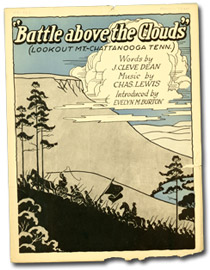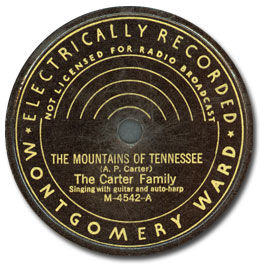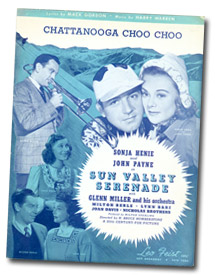Center for Popular Music
My Homeland Tennessee Themes
TENNESSEE HISTORY

The rich history of the Volunteer State has been celebrated through music for many years. Song makers from both within and without Tennessee have created music that chronicles some of the state’s most significant events. Railroad accidents, courtroom dramas, celebratory events, political races, weather disasters, labor strife, and more are all treated. The tragedy of the American Civil War had an especially strong affect on composers. Songwriters wrote of the battles and soldiers who fought in them both during the conflict itself and in the years following. The battles of Shiloh and Chattanooga (Lookout Mountain and Missionary Ridge) were especially well documented by songwriters.
The coming of the twentieth century brought many political, technological, and social changes to Tennessee. For example, the 1925 Scopes “Monkey” trial in Dayton drew nationwide interest as William Jennings Bryan and Clarence Darrow argued the legality of teaching evolution in public schools. The colorful and social explosive subject matter seemed to grip musical imaginations and songwriters rushed in with a raft of “monkey” songs.
SENTIMENTAL TENNESSEE
Many songs express sentimental attachment to Tennessee as a place of blissful haven. Tennessee is often represented as the magical, romantic place that one wants to return to—a Shangri-La where the sweetheart waits forever, or a little country cabin where Mother anticipates a sweet homecoming. Dear, sweet, sunny Tennessee served as an archetype for an idyllic home that few of the writers of these songs experienced in person, as they wrote their songs in small, stuffy rooms on New York’s Tin Pan Alley. The sheet music here offers examples of how songwriters have dreamed about the enchanting state of Tennessee.
NATURAL TENNESSEE

The state of Tennessee is divided into three Grand Divisions—East, Middle, and West, each represented by one of the three stars on the Tennessee state flag. Songwriters have for years celebrated the natural beauty to be found in Tennessee’s set of three regions. From the mountains in East Tennessee to the Natchez Trace in the Middle to the Mississippi River in the West, the state’s landscape has inspired popular music.
The most commonly represented natural features are the state’s mountains and rolling hills. Specific areas such as the Cumberland Plateau and the Smoky Mountains are also frequent song subjects. Lookout Mountain is often referenced, due to its connection with the Civil War battle that took place there and for the popular tourist destinations found there (such as Rock City). Numerous songs also extoll Tennessee’s blue, purple, and sleepy hills wherever they might lie.
Rivers also enjoy generous representation in song. The Cumberland, Tennessee, and the Green Rivers are but a few of these waterways that wind through popular song.
TENNESSEE PLACES
Tennessee’s cities and towns have been subjects in popular songs for many years. During the Twentieth Century (especially post-World War I), urban centers might have received more songwriting attention than the natural or imagined attributes of Tennessee common to an earlier period. While cities such as Knoxville, Johnson City, or tiny Nutbush get a mention now and again, the vast majority of city-related songs are connected with either Nashville, Memphis, or Chattanooga.

Nashville became a popular subject for songs for a variety of reasons: its standing as an important university town; it held the State Capitol; it is a major transportation hub; and its place as a center of the music business. In the early twentieth century, Nashville is portrayed as a wonderful place to visit or travel through. After Nashville rose to prominence as “Music City” in the post-World War II years, it is often characterized less hospitably as a place where the dreams of musicians are broken. Yet, on the other hand, there’s the jaunty reference to “thirteen hundred and fifty-two” guitar-picking “cats” in Nashville, all of who “can play twice as better than I will.”
Chattanooga, like Nashville, is an important transportation center, due both to the railroad hub there and its location on the Tennessee River. The railroad connection, though, has been writ large because of the city’s place in Glenn Miller’s 1941 million-selling hit, “The Chattanooga Choo Choo.”
Memphis is by far the best represented Tennessee city in American popular music. It has an abiding place in popular culture because of its connection to the blues and rock ‘n’ roll. The city has been home to many important musicians, including W.C. Handy, Elvis Presley, B.B. King, Alex Chilton, Aretha Franklin, and Sam Phillips of Sun Records. Memphis continues to be a commonly referenced city up to this day. The Rock and Soul Museum in Memphis maintains a list of over one thousand songs that mention Memphis or prominent places within the city.
Contact Us
Center for Popular Music
Bragg Media & Entertainment Bldg.
Room 140
MTSU Box 41
1301 E. Main Street
Middle Tennessee State University
Murfreesboro, TN 37132
615-898-2449




